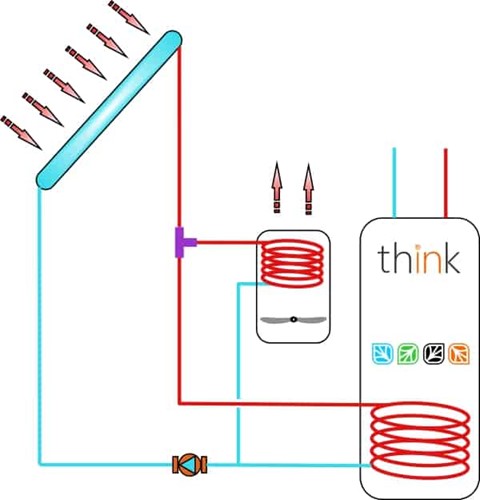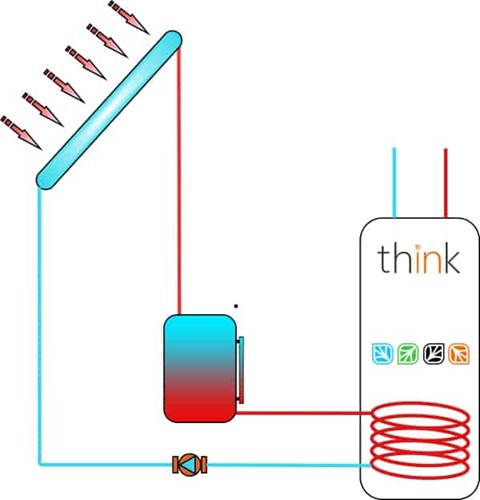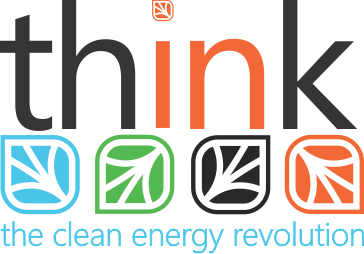Solar energy isn’t new. In fact, most people are familiar with photovoltaic cells, or solar panels, that can be used to generate electricity for your home. What many people don’t know is that solar energy can also be used to heat your home. Solar Thermal Energy uses the sun to heat a transfer fluid, which then carries the energy to be used for hydronic (hot water) home heating systems or domestic hot water heating.
How It Works
The process is simple: solar thermal collectors use a fluid that is circulated through the system to collect thermal energy while the sun is up. There are different types of collectors as well as different types of systems.
The Collectors
Flat Plate Collectors consist of a dark, flat plate absorber, a casing with a glass top, and insulation. Tubing (usually copper) is attached to the plate and carries the fluid through the panel. The fluid is circulated through the collector and absorbs heat from the flat plate, which absorbs radiant energy from the sun. The glass allows radiant energy to enter the collector while working with the casing and insulation to reduce heat loss.
Evacuated Tube Collectors consist of individual heat pipes inserted into a manifold that has transfer fluid flowing through it. The heat pipes are often made of copper and are filled with a charge of fluid (usually refrigerant). A dark metal is often brazed onto the heat pipes to help collect heat. A “condenser”, or expanded bulb, is located at the top of the pipe, sealing it. The pipe is encased in a vacuum-sealed glass tube, virtually eliminating any heat loss from the collector.
The heat pipe works by absorbing energy into the refrigerant, the heated refrigerant turns to gas and travels up the pipe to the condenser. The transfer fluid for the system then collects the energy and carries it to the load. Inside the condenser the refrigerant, once the energy is absorbed into the transfer fluid condenses back into liquid form and the heavier fluid runs back down into the pipe to collect more energy. The manifold is simply an insulated pipe with pockets built into it to hold the condensers of the heat pipes and carry the transfer fluid.
The Systems
Pressurized Solar Thermal Systems are closed systems that circulate fluid through the solar panels, and then distribute the heated fluid to a load. Though pressurized systems can vary in design and application, they all require a “heat dump”. Because the system is pressurized the fluid is in all parts of the system at all times, including the solar panels. If the system stopped flowing while the panels were absorbing heat, the fluid would boil and burn. This happens when the load is satisfied and the sun is still shining on the panels. The solution is to have a “heat dump”, somewhere to dissipate the excess heat. This is usually either the ground or the atmosphere. This type of system requires added components and controls.

Drain Back Systems are not pressurized and are not "filled". They have an extra tank known as the drain back tank. This tank is in series with the solar thermal panels and is sized to contain enough fluid to fill the panels, piping and components back to the load. When the system is on, a system pump at or below the drain back level pumps the fluid from the lowest part of the system up into the panels. Gravity brings the fluid back into the drain back tank and it is piped back to the load. The drain back system protects the fluid while the system is not operating. It also prevents the fluid from freezing by keeping all the fluid inside the building while the system is not operating. In our opinion, drain back systems are the better option between the two.


